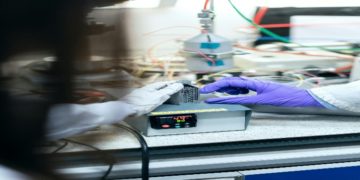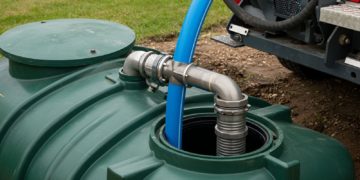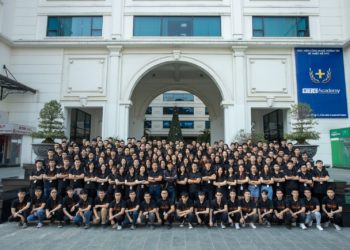The hospitality industry faces a unique challenge when it comes to fire safety: providing comprehensive protection for guests and staff whilst maintaining the welcoming, comfortable atmosphere that defines exceptional guest experiences. Traditional approaches to fire safety often treated protection systems as necessary inconveniences—visible reminders of potential danger that could detract from the carefully crafted ambience of hotels and restaurants.
However, the evolution of fire safety technology and integration strategies has transformed this paradigm entirely. Modern hospitality businesses can now implement sophisticated fire protection systems that provide superior safety whilst remaining virtually invisible to guests during normal operations. The key lies not in individual fire safety components but in their seamless integration with broader building management systems and operational procedures.
At EnviroFWA, our extensive experience across the hospitality sector has demonstrated that the most effective fire safety programmes treat protection as an integral part of the overall guest experience rather than a separate consideration. By implementing integrated fire safety strategies, forward-thinking operators achieve superior protection levels whilst enhancing rather than compromising their operational excellence.
The Evolution of Hospitality Fire Safety Integration
Traditional fire safety approaches in hospitality relied heavily on reactive systems—smoke detectors, sprinklers, and alarm systems that activated only when fires were already established. Whilst these systems remain essential components of comprehensive protection, modern fire safety strategies emphasise prevention, early detection, and coordinated response systems that minimise both fire risk and guest disruption.
Integrated Detection and Prevention Systems
Contemporary fire safety integration begins with sophisticated detection systems that identify potential fire conditions long before traditional smoke detectors would activate. These advanced systems can differentiate between actual fire conditions and common hospitality environment factors such as cooking smoke, steam from hot food service, or aerosols from cleaning activities.
The integration of multiple detection technologies creates layered protection that reduces false alarms while providing earlier warning of genuine fire conditions. Heat sensors, smoke detectors, and gas detection systems work together through centralised control systems that can make intelligent decisions about appropriate responses based on multiple input factors.
Building Management System Integration
The most effective fire safety systems integrate seamlessly with broader building management systems to create coordinated responses that optimise both safety and operational continuity. When fire conditions are detected, integrated systems can automatically adjust HVAC operations to control smoke movement, modify lighting systems to assist evacuation, and coordinate with security systems to manage access control during emergencies.
This integration extends beyond emergency response to encompass normal operations. Fire safety systems can monitor building conditions continuously, identifying potential fire risks such as overheating equipment or electrical faults before they develop into actual fire conditions. This predictive capability enables proactive maintenance and risk mitigation that prevents fires rather than simply responding to them.
Strategic Fire Damper Management: The Hidden Critical Component
One of the most crucial yet often overlooked aspects of hospitality fire safety lies in the management of fire dampers throughout HVAC systems. These components play essential roles in controlling fires and smoke movement, yet their importance is frequently underestimated until failure occurs during actual fire events.
The Critical Role of Fire Dampers
Fire damper testing represents a fundamental requirement for hospitality fire safety, as these components prevent fire and smoke from spreading through ventilation systems that could otherwise act as conduits for rapid fire propagation throughout buildings. In hospitality settings, where HVAC systems often interconnect multiple floors and zones, properly functioning fire dampers can mean the difference between contained incidents and catastrophic fires.
The challenge lies in ensuring these critical components remain functional despite being hidden within ductwork and subjected to continuous airflow, vibration, and environmental factors that can affect their operation over time. Fire dampers must close reliably when activated by heat,yet remain fully open during normal operations to avoid restricting airflow and affecting guest comfort.
Integration with HVAC Operations
Modern fire damper management integrates closely with overall HVAC system operation and maintenance. Rather than treating fire dampers as isolated safety components, effective programmes coordinate damper testing and maintenance with broader air conditioning servicing schedules to minimise operational disruption whilst ensuring comprehensive system functionality.
This integrated approach enables predictive maintenance strategies that identify potential damper problems before they compromise safety or operations. Regular inspection programmes can detect issues such as mechanical wear, corrosion, or obstruction that could prevent proper damper operation during fire events.
Kitchen Fire Safety: Managing the Highest-Risk Environment
Commercial kitchens represent the most challenging fire safety environments in hospitality settings, combining high-temperature cooking processes, combustible materials, and complex ventilation systems that require specialised protection strategies. The integration of kitchen fire safety with broader building protection systems demands sophisticated approaches that address both the unique risks present in kitchen environments and their potential impacts on other areas.
Extraction System Fire Protection
Commercial kitchen ventilation systems require specialised fire protection that addresses the unique risks associated with grease accumulation and high-temperature cooking processes. Grease extraction systems can become fire hazards themselves if not properly maintained, as accumulated grease deposits provide fuel for fires that can spread rapidly through ductwork to other areas of buildings.
The integration of kitchen extraction systems with broader fire safety programmes requires coordination between ventilation maintenance, fire suppression systems, and emergency response procedures. Automated fire suppression systems in kitchen hoods must coordinate with ventilation systems to ensure effective fire suppression while preventing smoke from spreading to dining areas.
Equipment-Specific Fire Safety
Different categories of kitchen equipment require tailored fire safety approaches that reflect their specific risk profiles and integration requirements. Commercial refrigeration systems present particular challenges due to their electrical loads, refrigerant handling requirements, and critical role in food safety that affects emergency response strategies.
The integration of equipment-specific fire safety with broader protection systems enables coordinated responses that address both immediate fire risks and secondary concerns such as food safety and business continuity. Emergency procedures must account for the safe shutdown of various equipment types whilst ensuring that critical systems continue operating to support emergency response efforts.
Emergency Lighting and Evacuation Systems: Invisible Until Essential
Effective emergency lighting and evacuation systems exemplify the principle of invisible protection—systems that remain unobtrusive during normal operations yet provide critical functionality when needed most. The integration of these systems with broader building operations creates opportunities for enhanced functionality whilst maintaining the aesthetic standards essential to hospitality environments.
Intelligent Emergency Lighting Design
Fire alarm and emergency lighting systems in hospitality settings must balance safety requirements with design considerations that maintain ambience and architectural integrity. Modern emergency lighting systems can integrate with normal lighting operations to provide subtle yet effective guidance during both normal and emergency conditions.
The integration of emergency lighting with broader lighting control systems enables sophisticated approaches such as gradual illumination changes that guide occupants toward exits without creating panic or disrupting ongoing operations in unaffected areas. These systems can also coordinate with HVAC operations to maintain clear evacuation routes whilst controlling smoke movement.
Communication and Coordination Systems
Effective evacuation systems extend beyond lighting to encompass communication and coordination capabilities that ensure organised responses during emergencies. Public address systems must integrate with fire detection systems to provide appropriate messages based on the location and nature of detected fire conditions.
The integration of communication systems with broader building management enables targeted messaging that addresses specific areas or occupant groups without creating unnecessary panic in unaffected zones. This capability is particularly valuable in hospitality settings where guests’ unfamiliarity with building layouts requires clear, calm guidance during emergency situations.
Maintenance Integration: Preventing Problems Before They Occur
The most effective fire safety programmes integrate seamlessly with broader planned maintenance strategies to create comprehensive approaches that prevent problems rather than simply responding to them. This integration enables more efficient maintenance scheduling whilst ensuring that fire safety systems receive appropriate attention throughout their operational lives.
Predictive Maintenance Strategies
Modern fire safety maintenance increasingly relies on predictive techniques that identify potential problems before they compromise system functionality. Regular testing and inspection programmes can detect issues such as sensor drift, mechanical wear, or communication failures that could prevent proper system operation during emergencies.
The integration of fire safety maintenance with broader building maintenance programmes enables more efficient scheduling and resource utilisation whilst ensuring comprehensive system coverage. Mechanical and electrical maintenance programmes can coordinate fire safety requirements with other building system needs to minimise disruption whilst maximising maintenance effectiveness.
Documentation and Compliance Management
Comprehensive fire safety programmes require extensive documentation to demonstrate compliance with regulatory requirements and support insurance coverage. The integration of fire safety documentation with broader maintenance management systems creates opportunities for more efficient record keeping whilst ensuring complete coverage of all system components.
This integrated approach to documentation supports both regulatory compliance and operational decision-making by providing comprehensive visibility into system condition, maintenance history, and performance trends. This information enables more informed decisions about system upgrades, replacement scheduling, and resource allocation.
Water System Integration: Addressing Multiple Safety Concerns
Fire safety systems in hospitality settings often intersect with water systems in ways that require careful coordination to address multiple safety concerns simultaneously. Sprinkler systems, standpipe connections, and fire pump installations must integrate with broader water management programmes to ensure both fire safety and water quality.
Sprinkler System Water Quality
The integration of fire sprinkler systems with broader water system management programmes address both fire safety and water quality concerns that can affect system reliability and regulatory compliance. Stagnant water in sprinkler systems can develop bacterial contamination that affects both system functionality and creates potential health risks if water is discharged during system operation.
Regular water testing and system flushing programmes can address both fire safety and water quality requirements efficiently whilst minimising operational disruption. These integrated programmes can coordinate with broader building water management activities to optimise resource utilisation whilst ensuring comprehensive coverage.
Legionella Risk Management
The intersection of fire safety and water systems creates particular challenges related to legionella risk management that require coordinated approaches addressing both safety concerns. Fire system water storage tanks and distribution networks can provide environments conducive to legionella growth if not properly managed.
The integration of legionella prevention programmes with fire safety maintenance ensures that both risk areas receive appropriate attention whilst avoiding conflicting requirements or duplicated efforts. This coordination is particularly important in hospitality settings where both fire safety and water quality directly affect guest safety and regulatory compliance.
Technology Integration and Smart Building Systems
The future of hospitality fire safety lies in intelligent systems that integrate fire protection with broader building management and operational systems. These integrated approaches enable more sophisticated responses to fire conditions whilst providing enhanced monitoring and control capabilities that improve both safety and operational efficiency.
IoT and Sensor Integration
Internet of Things (IoT) technologies enable comprehensive monitoring of fire safety systems and building conditions that support both fire prevention and response capabilities. Smart sensors can monitor environmental conditions, equipment performance, and system status continuously, providing early warning of potential problems and enabling proactive maintenance responses.
The integration of IoT technologies with existing building systems creates opportunities for enhanced automation and coordination that improve both safety and operational efficiency. These systems can coordinate fire safety responses with HVAC operations, lighting control, and security systems to optimise both safety outcomes and operational continuity.
Data Analytics and Performance Optimisation
Advanced fire safety systems generate substantial data about building conditions, system performance, and operational patterns that can support both fire prevention and operational optimisation efforts. Data analytics capabilities can identify trends and patterns that indicate potential fire risks or system performance issues before they become critical problems.
The integration of fire safety data with broader building management analytics creates opportunities for comprehensive optimisation approaches that address multiple operational objectives simultaneously. This integrated approach can identify opportunities for energy efficiency improvements that also enhance fire safety, or operational changes that improve both guest experience and emergency response capabilities.
Staff Training and Emergency Response Integration
Comprehensive fire safety extends beyond technical systems to encompass human factors that significantly influence safety outcomes during actual emergencies. The integration of staff training programmes with technical fire safety systems ensures coordinated responses that optimise both guest safety and operational continuity during emergency situations.
Role-Specific Training Programmes
Different staff roles require tailored fire safety training that reflects their specific responsibilities and capabilities during emergency situations. Front desk staff need training on guest communication and coordination procedures, whilst housekeeping staff require awareness of fire risks and appropriate response procedures in guest accommodation areas.
Kitchen staff require specialised training that addresses the unique fire risks present in commercial cooking environments and appropriate responses to different types of kitchen fires. Maintenance staff need comprehensive training on fire safety system operation, emergency procedures, and coordination with emergency services.
Emergency Response Coordination
Effective fire safety programmes require clear emergency response procedures that coordinate staff actions with automatic system responses to optimise outcomes during actual fire events. These procedures must account for guest evacuation, staff safety, system operation, and coordination with emergency services.
The integration of emergency response procedures with broader operational procedures ensures that staff can respond effectively whilst maintaining essential operations in unaffected areas. This capability is particularly important in hospitality settings where complete facility shutdown may not be necessary or appropriate, depending on the location and extent of fire conditions.
Regulatory Compliance and Insurance Considerations
Fire safety in hospitality is governed by comprehensive regulatory frameworks that establish minimum standards whilst leaving substantial room for enhanced protection approaches that exceed basic requirements. Understanding these regulatory requirements and their integration with broader business objectives is essential for effective fire safety programme development.
Building Regulations and Fire Safety Orders
The Regulatory Reform (Fire Safety) Order 2005 establishes fundamental fire safety obligations that apply to all hospitality businesses, whilst building regulations provide specific technical requirements for fire safety system installation and maintenance. These regulatory frameworks emphasise risk assessment approaches that require a comprehensive evaluation of fire risks and appropriate mitigation measures.
The integration of regulatory compliance with broader business objectives enables approaches that exceed minimum requirements whilst delivering additional business benefits. Enhanced fire safety systems can support sustainability objectives, operational efficiency improvements, and guest experience enhancements whilst ensuring comprehensive regulatory compliance.
Insurance Benefits and Risk Management
Insurance companies increasingly recognise the benefits of comprehensive fire safety programmes through reduced premiums and enhanced coverage terms for properties with superior protection systems. The integration of fire safety with broader risk management programmes can deliver substantial insurance benefits whilst enhancing overall business resilience.
Comprehensive fire safety programmes demonstrate due diligence and appropriate risk management that provide important protection against liability in the event of fire incidents. This protection extends beyond property damage to encompass business interruption, liability claims, and regulatory enforcement actions that could have substantial business impacts.
Implementation Strategy: Building Integrated Excellence
The development of comprehensive integrated fire safety programmes requires systematic approaches that build capabilities progressively whilst maintaining operational continuity and guest satisfaction. The most successful implementations follow structured pathways that prioritise high-risk areas whilst developing broader integration capabilities over time.
Assessment and Planning Phase
Comprehensive fire safety integration begins with thorough risk assessment that evaluates all fire hazards, existing protection systems, and integration opportunities with broader building operations. This assessment should encompass both technical systems and operational procedures whilst considering guest experience implications and business continuity requirements.
The planning phase must address both immediate safety priorities and longer-term integration objectives, ensuring that initial improvements support broader programme development whilst delivering immediate safety and operational benefits.
Phased Implementation Strategy
Effective fire safety integration programmes typically follow phased implementation approaches that build capabilities systematically whilst minimising operational disruption. Initial phases should focus on the highest-risk areas and critical system integration, whilst later phases expand coverage and enhance integration capabilities.
The coordination of fire safety improvements with broader building renovation projects can achieve significant cost efficiencies whilst minimising guest disruption. This integrated approach enables comprehensive system upgrades whilst maintaining operational continuity throughout implementation periods.
Performance Monitoring and Continuous Improvement
Mature fire safety programmes incorporate performance monitoring and continuous improvement processes that ensure sustained effectiveness whilst identifying opportunities for enhancement. Regular testing, inspection, and performance evaluation programmes should assess both technical system functionality and operational procedure effectiveness.
The integration of performance monitoring with broader building management systems enables comprehensive visibility into fire safety performance whilst supporting data-driven improvement decisions. This monitoring capability provides important feedback for both system optimisation and programme enhancement efforts.
Cost-Benefit Analysis: Strategic Investment in Comprehensive Protection
Whilst integrated fire safety programmes require substantial investment, the costs of fire incidents far exceed prevention costs, making comprehensive protection programmes financially compelling beyond their obvious safety benefits. The business case for fire safety integration encompasses both direct cost avoidance and broader business benefits that enhance long-term profitability.
Direct Cost Avoidance
Fire incidents can result in catastrophic costs including property damage, business interruption losses, liability claims, and increased insurance premiums. The implementation of comprehensive integrated fire safety programmes typically reduces these incident-related risks by 80-90% compared to basic compliance approaches.
The integration of fire safety with broader maintenance programmes can achieve significant cost efficiencies through coordinated scheduling, shared resources, and integrated system approaches that optimise both safety and operational efficiency.
Business Continuity and Reputation Protection
Beyond direct cost avoidance, comprehensive fire safety programmes protect business continuity and reputation assets that represent substantial business value. Fire incidents can cause long-term business impacts, including customer loss, regulatory scrutiny, and financing difficulties that extend far beyond immediate incident costs.
The reputation protection provided by comprehensive fire safety programmes becomes particularly valuable in hospitality settings where guest safety incidents can cause lasting damage to brand value and customer confidence. Superior fire safety programmes can become competitive advantages that enhance rather than detract from business success.
Future Trends: The Evolution of Integrated Fire Safety
The future of hospitality fire safety lies in increasingly sophisticated integration with broader building systems and operational procedures. Emerging technologies and evolving regulatory requirements are creating opportunities for enhanced protection approaches that deliver superior safety whilst supporting broader business objectives.
Artificial Intelligence and Machine Learning
AI and machine learning technologies are beginning to transform fire safety through enhanced detection capabilities, predictive maintenance approaches, and intelligent response coordination. These technologies can analyse complex patterns of building conditions, system performance, and operational data to identify fire risks and optimisation opportunities that exceed human analytical capabilities.
The integration of AI technologies with existing fire safety systems creates opportunities for autonomous optimization that continuously improves both safety and operational efficiency based on ongoing performance data and changing conditions.
Advanced Integration Technologies
Emerging building management technologies are enabling more sophisticated integration approaches that coordinate fire safety with broader building operations in real-time. These technologies can optimise fire safety responses based on current building conditions, occupancy patterns, and operational requirements, whilst maintaining superior protection levels.
Strategic Integration for Superior Protection
Fire safety integration in hospitality represents a fundamental shift from reactive protection approaches to proactive, integrated strategies that enhance both safety and operational excellence. The complex requirements of hospitality environments demand sophisticated approaches that address multiple objectives simultaneously whilst maintaining the guest experience standards that define successful operations.
The most successful hospitality businesses recognise fire safety integration as a strategic investment that delivers measurable returns through reduced risk, enhanced operational efficiency, and competitive differentiation. By implementing comprehensive integrated fire safety programmes that coordinate with broader building management and operational systems, operators can achieve superior protection levels whilst enhancing rather than compromising their business success.
At EnviroFWA, our comprehensive approach to fire safety integration helps hospitality businesses develop and implement programmes that exceed regulatory requirements whilst delivering substantial business benefits. From foundational fire safety compliance to advanced integration and monitoring capabilities, we provide the expertise and services needed to achieve fire safety excellence that supports long-term business success.
Ready to transform your fire safety from a compliance burden into a strategic competitive advantage? Contact our team today to discover how integrated fire safety systems can enhance your operational excellence while providing superior protection for your guests, staff, and business investment.












































































